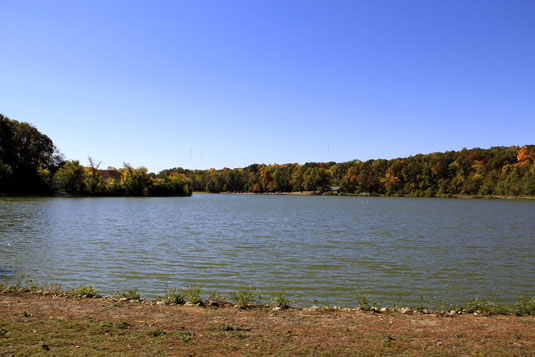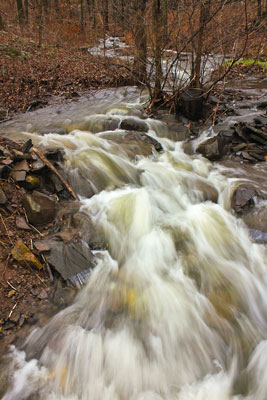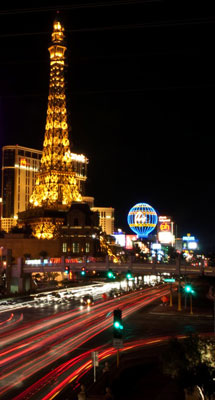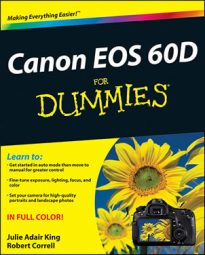Providing specific capture settings for scenic outdoor photography is tricky because there’s no single best approach to capturing a beautiful stretch of countryside, a city skyline, or another vast subject with your Canon EOS 60D. Depth of field is an example: One person’s idea of a super cityscape might be to keep all buildings in the scene sharply focused. Another photographer might prefer to shoot the same scene so that a foreground building is sharply focused while the others are less so, thus drawing the eye to that first building.
That said, here are a few tips to help you photograph a scenic vista the way you see it:
-
Shoot in aperture priority autoexposure mode (Av) so that you can control depth of field. If you want extreme depth of field so that both near and distant objects are sharply focused, select a high f-stop value. An aperture of f/13 worked for this shot.

-
If the exposure requires a slow shutter speed, use a tripod to avoid blurring.
-
*For dramatic waterfall and fountain shots, consider using a slow shutter to create that “misty” look. Using a slow shutter speeds blurs the water, giving it a soft, romantic appearance.

-
At sunrise or sunset, base exposure on the sky. The foreground will be dark, but you can usually brighten it in a photo editor, if needed. If you base exposure on the foreground, on the other hand, the sky will become so bright that all the color will be washed out — a problem you usually can’t easily fix after the fact.
-
*For cool, nighttime city pics, experiment with a slow shutter speed. Assuming that cars or other vehicles are moving through the scene, the result is neon trails of light. Shutter speed for this image was 10 seconds. The longer your shutter speed, the blurrier the motion trails.

-
For the best lighting, shoot during the “magic hours.” That’s the term photographers use for early morning and late afternoon, when the light cast by the sun is soft and warm, giving everything that beautiful, gently warmed look. This time of day, in the morning and evening, is often called the golden hour.
-
In tricky light, bracket shots. Bracketing simply means to take the same picture at several different exposures to increase the odds that at least one captures the scene the way you envision. Bracketing is especially a good idea in difficult lighting situations such as sunrise and sunset.

